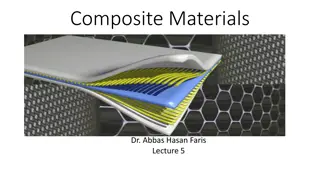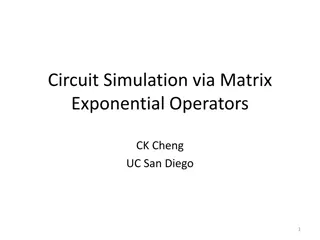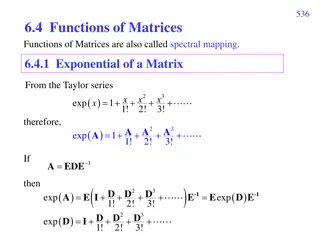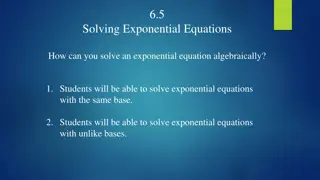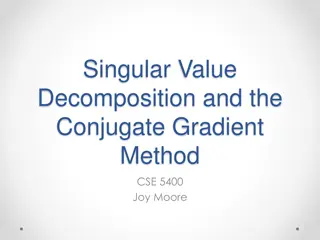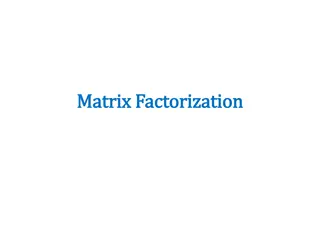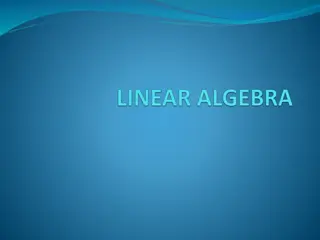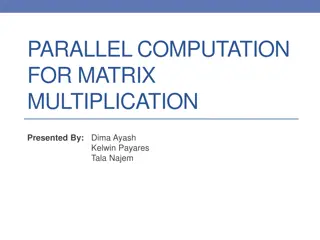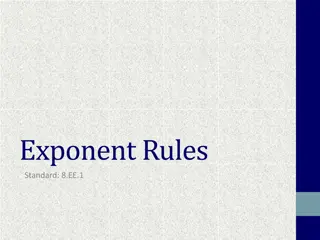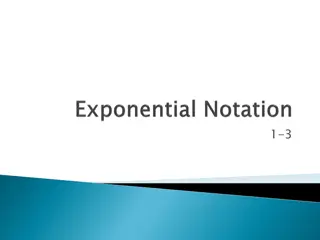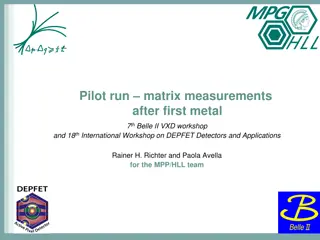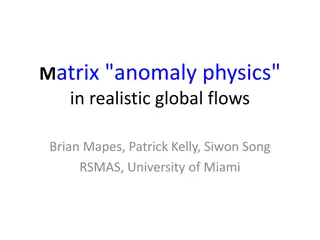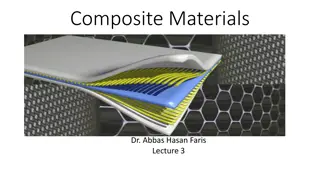Exploring Methods for Evaluating Matrix Exponential
This study delves into various techniques for evaluating the matrix exponential, including the Cauchy Integral Formula and Putzer's equation via Laplace Transforms. Motivated by linear ordinary differential equations, the matrix exponential is explored in depth, showcasing its applications and significance in mathematical analysis.
Download Presentation

Please find below an Image/Link to download the presentation.
The content on the website is provided AS IS for your information and personal use only. It may not be sold, licensed, or shared on other websites without obtaining consent from the author. Download presentation by click this link. If you encounter any issues during the download, it is possible that the publisher has removed the file from their server.
E N D
Presentation Transcript
Several Ways of Evaluating the Matrix Exponential In partial fulfillment of the Senior Comps requirement By: Hector Lopez Advisor: Prof. Ron Buckmire 1
Outline: 1. Introducing the Matrix Exponential 2. Method 1: Cauchy s Integral Formula 3. Method 2: Putzer s equation via Laplace Transforms 4. Conclusion 2
Motivation Consider the linear ordinary differential equation ? = ?? where A is a scalar. Using Separation of Variables to find the general solution, we get ? ? = ?0???. Now, assume we have the following linear ODE ? = ? ?, where ? is a ? ? ? matrix, and ? is a column vector that satisfies the initial condition ? 0 = ??. Then, ?(?) = ??? ??. 3
Natural way of defining it is by using definitions of the exponential function and extending them to matrices. We are going to be using this particular matrix with 1= 4, 2= 2. 4
The Cauchy Integral Formula This method is the most unique and elegant way of evaluating for the matrix exponential. Interesting result: given an analytic function f(z) and a point z = z0, we can determine ?(?0). 5
In the case of a square matrix, we define the Cauchy Integral as 1. Select a function ? ? that is analytic 2. Find the eigenvalue/poles 3. Determine a contour , or closed boundary, that surrounds every eigenvalue. ? ? = ??? 6
Process Each element in the matrix above has poles at ? = 4 and ? = 2 (i.e. the eigenvalues of the matrix, A). 7
Contour Circle centered at 1 with radius 3 + ?. Deformation Theorem: the contour can be deformed in any way as long as it encloses all eigenvalues of A. 8
First element : Thus, = Repeat the process for each Cauchy Integral. = 9
Method 2: Putzers equation Given the eigenvalues, 1, , ?, of an arbitrary square matrix, the matrix exponential can be evaluated as follows where ??are the exponential functions and ?? are n x n matrices. 10
Putzers Equation Defined Define n x n matrices ?1, ,?? by the following The functions ?1? , ,??? are defined by the recursive system 11
Laplace Transformations Useful technique for solving linear ODE equations Laplace Transformation is denoted as Inverse Laplace Transformation: Since we are dealing with a system of ordinary differential equations, we are using the Laplace Transformation of a derivative. Apply this to the recursive system: . 12
, we develop a If we apply the Laplace Transformation to ?? general way of solving for the recursive system of equations. Recall: Take the inverse Laplace Transformation, 13
Example Now, let s evaluate the matrix exponential using the matrix that was previously introduced. Eigenvalues of our matrix : 14
Finally, This solution is identical to the solution that we obtained from using Cauchy s Integral Formula. 15
For n eigenvalues, the general characteristic polynomial equation is given by Thus, by the Cayley-Hamilton Theorem, we can replace the in the equation with the original matrix, ?. 17
Proof According to the Cayley-Hamilton Theorem for any square matrix A. From this theorem, we are able to introduce two facts: (1) (2) implies Now, verify that ?(?) is a solution to the ODE. 18
Recall: 20
Conclusion We have given multiple methods to evaluate for ???. One uses complex analysis techniques while the other uses rules and practices from Ordinary Differential Equation. o Other methods use techniques from Linear Algebra, Calculus, ODE, Complex Analysis, etc. i. ii. Putzer s Equation iii. Laplace Transformations iv. Cayley- Hamilton Theorem Cauchy Integral Formula 21


